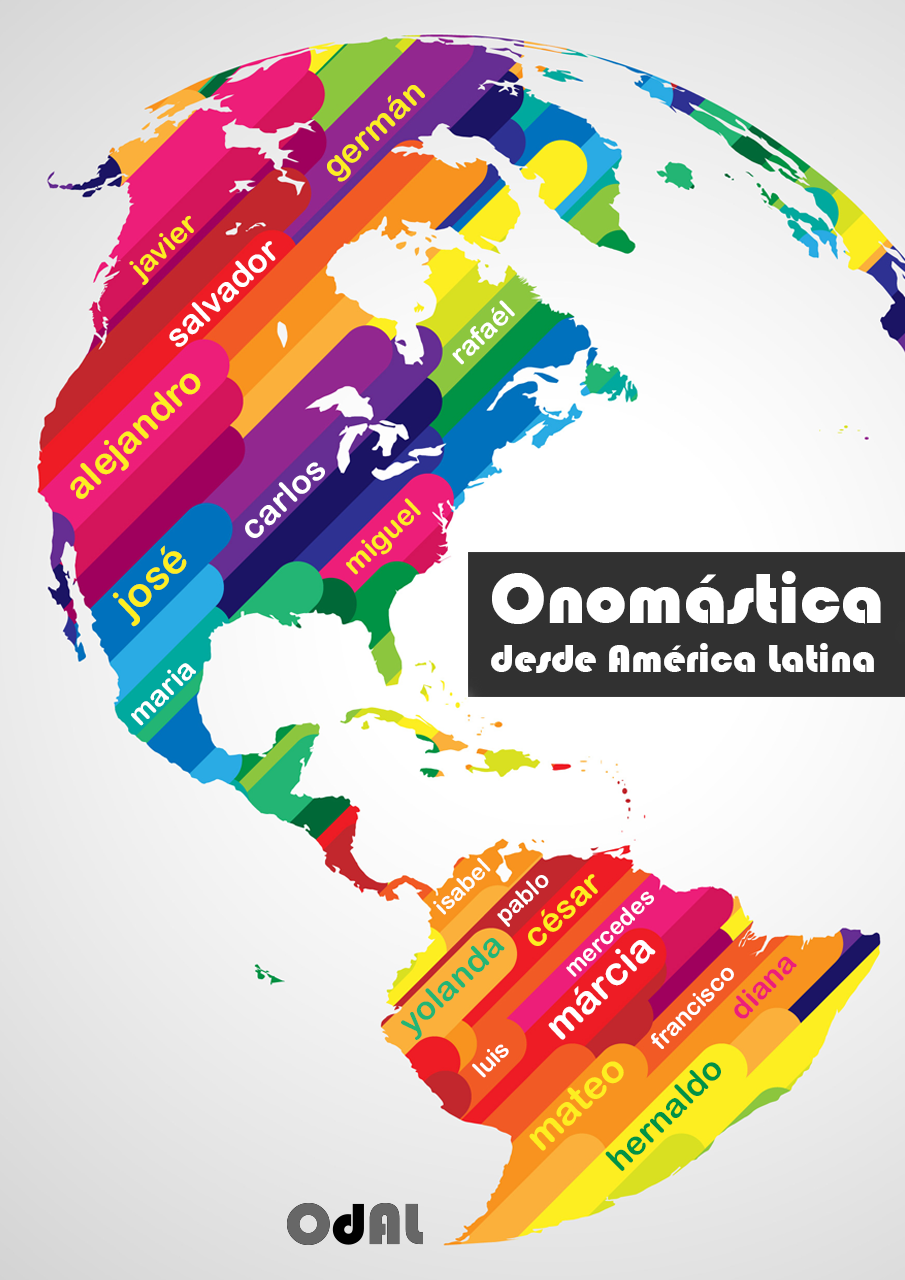A study about macrotoponomy of Mato Grosso State
DOI:
https://doi.org/10.48075/odal.v4i1.30624Keywords:
lexicon, Toponym, Mato Grosso, Social HistoryAbstract
This paper discusses interfaces between toponymy, culture and social history based on the study of the macrotoponymy of the 141 municipalities of Mato Grosso (IBGE, 2022). For that, it analyzes the linguistic questions related to each toponym, as well as the aspects of the extralinguistic reality contained in the designations (DICK, 1990; 1992). The analysis of possible denominational causes sought support in encyclopedias and regional works (HIGA; MORENO, 2017; BARROZO, 2014; FERREIRA, 2001). The study showed a significant creation of municipalities in the 1980s and 1990s (85 new municipalities – 60.28% of the total) as a result of the division of the state of Mato Grosso (1977) and the consequent colonizing actions of the Federal Government in partnership with companies private companies that explored an immense territory of the state. In this context, the taxe of chorotoponyms was the most productive.
References
Barrozo, João Carlos. (2014). A colonização em mato grosso como “portão de escape” para a crise agrária no Rio Grande do Sul. CLIO – Revista de Pesquisa Histórica, Recife, v. n. 32.2, 144-146.
Cabral, Ana Suely Arruda Câmara; Rodrigues, Aryon dall'Igna. (2002). Línguas indígenas brasileiras: Fonologia, gramática e história. Atas do I Encontro Internacional do Grupo de Trabalho sobre Línguas Indígenas da ANPOLL t. 1, 327-37 Belém: EDUFPA
Caldas, José Augusto. (1899) Vocabulário da língua indígena dos Bororos Coroados. Equipe de Mato-Grosso. Cuyabá.
Cardoso, Armando Levy. (1961). Toponímia brasílica. Rio de Janeiro: Biblioteca do Exército Editora.
Carvalhinhos, Patrícia de Jesus. (2002-2003). Onomástica e lexicologia: o léxico toponímico como catalisador e fundo de memória. Estudo de caso: os sociotopônimos de Aveiro (Portugal). Revista USP, São Paulo, n.56, 172-179.
Dick, Maria Vicentina de Paula do Amaral. (2006). Fundamentos teóricos da Toponímia. Estudo de caso: o projeto ATEMIG – Atlas toponímico do estado de Minas Gerais (variante regional do Atlas Toponímico do Brasil). In: SEABRA, M. C. C. de (org.) O léxico em estudo. Belo Horizonte: Faculdade de Letras da UFMG, 91-117.
Dick, Maria Vicentina de Paula do Amaral. (2004). A Língua de São Paulo. Revista USP, São Paulo, n. 63, 36-63.
Dick, Maria Vicentina de Paula do Amaral. (1992). Toponímia e Antroponímia no Brasil. Coletânea de Estudos. São Paulo: Serviço de Artes Gráficas/FFLCH/USP.
Dick, Maria Vicentina de Paula do Amaral. (1990). A motivação toponímica e a realidade brasileira. São Paulo: Edições Arquivo do Estado.
Drumond, Carlos. (1965). Contribuição do Bororo à toponímia brasílica. São Paulo: Editora da USP.
INSTITUTO BRASILEIRO DE GEOGRAFIA E ESTATÍSTICA – IBGE. (2022). Cidades e Estados. Disponível em: https://ibge.gov.br/cidades-e-estados.html. Acesso em: 03 de abril de 2022.
INSTITUTO BRASILEIRO DE GEOGRAFIA E ESTATÍSTICA – IBGE. (2022). Portal de mapas. Disponível em: https://portaldemapas.ibge.gov.br/portal.php#mapa198. Acesso em: 10 de abril de 2022
Ferreira, João Carlos Vicente. (2014). Enciclopédia Ilustrada de Mato Grosso. Cuiabá. Editora Integrar.
Ferreira, João Carlos Vicente. (2001). Mato Grosso e seus Municípios. Cuiabá. Editora Buriti.
Higa, Tereza Cristina Souza.; Moreno, Gislaene. (2017). Geografia de Mato Grosso: território, sociedade e ambiente. 2 ed. Cuiabá: Entrelinhas.
Houaiss, Antônio. (2009). Dicionário Houaiss da língua portuguesa. Rio de Janeiro: Objetiva.
Ianni, Octavio. (1979). Colonização e Contra Reforma Agrária na Amazônia. Petrópolis: Ed. Vozes.
Isquerdo, Aparecida Negri. (2020). Prefácio In: Amaral, Eduardo Tadeu Roque; Seide, Márcia Sipavicius. Nomes próprios de pessoa: introdução à antroponímia brasileira. São Paulo: Blucher, 9-25.
Isquerdo, Aparecida Negri. (2013). A motivação toponímica: algumas reflexões. In: Sella, Aparecida Feola; Corbari, Clarice Cristina; Bidarra, Jorge. (org.). Pesquisas sobre Léxico: reflexões teóricas e aplicação. 1a ed. Campinas-SP; Cascavel-PR: Pontes; Edunioeste, 2013, v. 26,. 81-96.
Sampaio, Teodoro. (1901). O tupi na geografia nacional. Memoria lida no Instituto Historico e Geographico de S. Paulo. São Paulo: Typ. da Casa Eclectica, 1901. Disponível em: http://etnolinguistica.wdfiles.com/local--files/biblio%3Asampaio-1901-tupi/. Acesso em: 30 de agosto de 2021.
Silva, Paulo Pitaluga Costa e. (2012). Erros e mitos na história de Mato Grosso. Cuiabá: Carlini e Caniato.
Silva, Júlio Romão da. (1966). Denominações indígenas na toponímia carioca. Rio de Janeiro: Brasiliana.
Sousa, Alexandre Melo de. (2008). Projeto Atlas Toponímico da Amazônia Ocidental Brasileira: Gênese e Trajetória. ÍCONE - Revista de Letras, São Luís de Montes Belos, v. 2, n. 2, 31-42, jul. 2008. Disponível em: http://www.slmb.ueg.br/iconeletras. Acesso em: 28 maio de 2022.
Siqueira, Elizabeth Madureira. (2017). História de Mato Grosso: da ancestralidade aos dias atuais. 2. ed. Cuiabá: Entrelinhas.
Trapero, Maximino. (1995). Para uma teoria lingüística de la toponímia: estudios de toponímia canaria.. 2ª edição. Las Palmas de Gran Canaria. Universidad de las Palmas de Grand Canaria.
Downloads
Published
How to Cite
Issue
Section
License
Copyright (c) 2023 Soeli Bento Clementi

This work is licensed under a Creative Commons Attribution-NonCommercial-ShareAlike 4.0 International License.
Creative Commons Copyright Notice
Open Access Journals Policy
Authors who publish in this journal agree to the following terms:
1. Authors retain the copyright and grant the journal the right of first publication, with the work simultaneously licensed under the Creative Commons Attribution License that allows the sharing of the work with recognition of authorship and initial publication in this journal.
2. Mandatory authorities to assume commitments, for non-exclusive distribution of the version of the work published in this journal (eg, publish in an institutional repository or as a book chapter), with recognition of authorship and initial publication in this journal.
3. Authors are allowed and encouraged to publish and distribute their work online (eg in institutional repositories or on the personal page) at any point before or during the editorial process, as this can generate productive changes as well as increase impact and citation of the published work (See The Effect of Open Access).
Creative Commons License
This work is licensed under a Creative Commons Attribution-NonCommercial-ShareAlike 4.0 International License, which allows sharing, copying, distributing, displaying, reproducing, a whole or parts as long as it has no commercial purpose and is cited by authors and a source.

